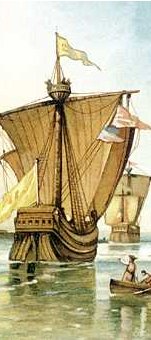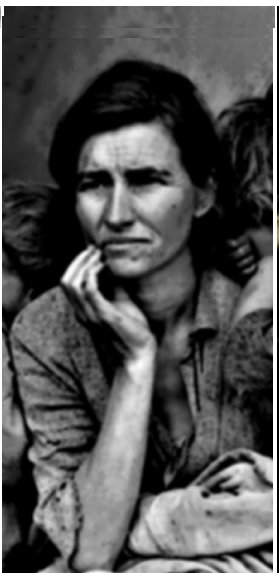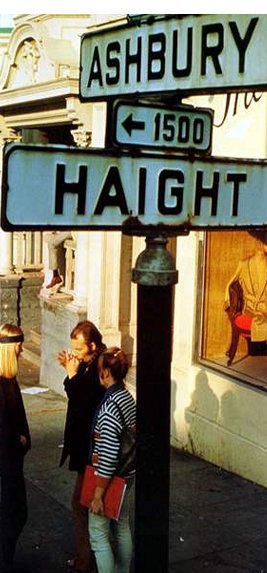The Greed-Driven Train Adeline Tang
Born in Bradford, England in 1955, Richard Rayner now lives in Los Angeles.
Unfazed by the Associates, he understands the criminal mind; the son of a
dishonest car salesman, Rayner was a shoplifter, check forger, and burglar.
Although he mended his ways and attempted architecture, he respects buccaneers
like the Associates for their daring deeds. He has written two nonfiction works
and five novels. His work has appeared in The New Yorker and other publications.
In
The Associates: Four Capitalists Who Created California,
Richard Rayner discusses the Transcontinental
Railroad and the overwhelming gluttony of the four men behind its creation.
Although biased in his beliefs that the Associates were a clique of four
greed-driven robber barons, he thoroughly documents their schemes that built
the transcontinental railroad. The Big Four, as they were also known, helped in
the rise of big business and the creation California,
both of which were ¡§necessary by-products of a process by which these four men
became as fabulously wealthy as anybody in American history.¡¨ 1
Rayner juxtaposes time and starts from the aftermath of Huntington¡¦s
involvement in the railroad only to flashback to the Central Pacific Railroad¡¦s
humble beginnings in chapter one to four. A hardened, cunning businessman in
his old age, Huntington believed that only edifices that generated money were
useful; because of this, he claimed that the ¡§Eiffel tower is all very
well¡K[but] where¡¦s the money it?¡¨ 2 Born into a destitute family, he
quickly learned the value of money and its importance in gaining advantage and
power. Caught by the scent of quick-cash in the 1848 gold rush, he hurried over
to California to sell goods.
Persevering through a fire, he partnered with Mark Hopkins, a neighboring Sacramento
businessman. Meanwhile, Rayner narrates the
difficulties of Theodore Judah¡X ¡§Crazy Judah¡¨¡Xin following his dream to create
a transcontinental railroad. Using Judah¡¦s
information, Huntington and his
partner Hopkins joined other wealthy Sacramento
businessmen to turn the Judah¡¦s
dream of a railroad into a work of reality. With five financers, Huntington,
Hopkins, Cornelius Cole (later an influential
congressman and senator), Charles Crocker, and Leland Stanford,
Judah gave wings to his
dream of building a transcontinental railroad. Using his political expertise, Judah
furthered the railroad question with President Abraham Lincoln until the 1862
Railroad Act legally allowed it to be built. Unfortunately, Judah
died from yellow fever by crossing Panama
on his many political missions to the East. The fantastic mind behind the
railroad, Judah
never received his proper reward; in this story, he acted as the man who worked
hard behind the scenes even though he never received his due credit.
Rayner covers the entire track-laying race between California¡¦s
Central Pacific Railroad and the East¡¦s Union Pacific Railroad between chapters
five through eight. Having met Thomas C. Durant, head of the Central Pacific, Huntington
learned more about his opponent and how to profit by lying and bending
government policy. Rayner proves that Durant¡¦s
¡§scheme was to gather quick profits from building the railroad, not from
running it¡¨ by creating his own construction company which gave him additional
wealth from inflated contracts. 3 Both Durant and Huntington pushed
for and passed amendments to the time limit clause on the 1862 Railroad Act as
well as twice the amount of the money and land grants for the different types
of terrain. Huntington learned that
if he kept pushing the government, it would eventually give in. With so much to
earn from the doubled land grants and cash in the new 1864 Railroad Bill, the
Central Pacific only needed more workers to hasten construction. Crocker found
the perfect laborers in the Chinese, who worked ¡§for $35 a month, as compared
to $3 a day for the Irish.¡¨ 4 Instead of operating on the vast scale
of Durant¡¦s Credit Mobilier, the Associates made the
Charles Crocker & Company as well as The Contract and Finance Company and
kept the stocks mainly for themselves. Carving through the mountains, the
Central Pacific moved in a race to gain as many miles as possible before Union
Pacific could gain all the easily graded lands. Huntington
set strategic goals for his railroad to cover, which began with the terminus
city of Ogden near the Salt
Lake. Although he eventually did
build up to Ogden with the Union
Pacific and the whole transcontinental railroad had been completed, Huntington
wondered if there was any profit left to be sucked from the railroad he
created.
From
chapters nine through twelve, Rayner discusses the
workings of the Central Pacific in trying to gain profit from their completed
railroad. As his partners eventually lost interest in the railroad, Huntington
decided to sell the railroad and added wharfs, ferries, more track, and built
on those tracks to increase Central Pacific¡¦s value. With public opinion
against the railroad and its corruption, Huntington
was forced to settle stockholder conflicts against his clique out of court to
keep things under cover while Credit Mobilier of the
Union Pacific fell under investigation by the House. Afraid that the House
Committee would investigate the Central Pacific next, the Associates burned
their records and claimed that they spent more on construction than was
commonly believed. After the ¡§railroad bubble¡¨ of prosperity burst, stock
values lowered and European stock markets, who invested heavily in American
railroads, collapsed from over speculation on the short-lived boom. 5
However, Crocker returned from his short retirement, returning his exit fee and
saving the business. Because of scandals, the Union Pacific¡¦s leadership fell
apart and Jay Gould, another railroad king, bought the weak company. Even
though the railroad excitement lessened and the post-Civil War boom ended, the
Big Four made much of their wealth by owning numerous railroads and poured
their money into lavish mansions. Growing old, the Big Four needed a younger
soul to bargain for them in politics; they found a candidate in Dave Colton. He
became a part of the Associates, which grew to become ¡§the Big Four and a
Half.¡¨ 6 Moving the Southern Pacific through Yuma,
a military post, Huntington acted
amicably with President Rutherford B. Hayes and managed to gain presidential
approval for his violation of military authority, secure his trust, and make
him backstab the Texas and
Pacific Railroad which helped him gain the presidency. This line did not go
far, however, because people suffered from an economic depression and could not
spend money to buy land around the tracks. Unfortunately, their political
backer, Colton, was a greedy man
who stole funds from the Associates. After one of his many enemies murdered
him, his wife, Ellen White, the sole heiress, gained all his assets and
obligations. Because they did not want a stranger to hold their stock, the Big
Four traded her financial obligation of one million dollars for all their
stocks back. Realizing that she had been cheated, she searched for legal help to
bring down the corrupt Associates.
In
the last chapters, Rayner depicts the dirtied
reputation of the railroads as it fell into a dark pit filled with scandal and
corruption. Evicting farmers who would not pay the land fee to the Southern
Pacific for their settlements, the Associates stirred up court cases and even a
battle, the Mussel Slough Tragedy, where eight men died. This event caused the
railroad to be known as ¡§the octopus¡¨ through Frank Norris¡¦s novel of the same
name. In Ellen White¡¦s court case, many of the Associates¡¦ secrets were
uncovered through letters that Colton
kept as blackmail. These ¡§Colton Letters¡¨ created ¡§lasting political damage¡¨
that turned the public against railroads. 7 Business, however, was
still strong with the railroads since the Associates¡¦ Southern Pacific shared
earnings with Jay Gould¡¦s Texas
and Pacific on the road east of El Paso
equally. Prepared for this, Huntington
had already forged links with other parts of America
and was able to travel coast to coast on Southern Pacific¡¦s Sunset Limited. The
Southern Pacific gave rates according to whether or not they favored the
shipper, how much they could pay, and how much competition they faced. Outside
of the railroad, the Associates made history in other ways. Stanford, upon the
loss of his only child, Leland, Jr., made a university in his name¡XStanford
University. With Eadweard Muybridge, a
photographer, he even sponsored a moving picture with many frames which led to
the invention of motion pictures. After the death of Crocker, Stanford and
Huntington¡¦s relationship fared even worse as Huntington
held a grudge against Stanford ever since Stanford took the position of Central
Pacific¡¦s president. Running for California
senator against Huntington¡¦s choice
of Aaron Sargent, Stanford initiated a word war with Huntington
that caused Huntington to blackmail
him, causing his downfall and the depression that led to his death. The only
associate left, Huntington grew
greedier and gained more railroads, tugs, freighters, and contracts that
symbolized national pride and power. He built a chapel to honor his mother and
gave Westchester, New York
a library that would ¡§add much to [their] happiness and may keep [them] from
temptation.¡¨ 8 His adopted daughter and niece Clara, married Prince
Francis von Hatzfeldt de Wildenburg,
the son of a German ambassador, with a dowry of ten million dollars. With the
$60 million debt to the government for railroad funds close to due, Huntington
tried to push it off with lobbying, but the government did not give in. Upon
his death, many despised him although he understood the true nature of America¡Xcapitalism.
Rayner continues with a summary of the Associates¡¦
financial matters, their misdeeds, and their accomplishments. With the
Associates, America
gained the greed that drove the Industrial Revolution, modern corporations,
immigrant labor, and corporate corruption that can control the government.
Rayner¡¦s thesis is that though the Associates were mostly a
group of materialistic businessmen, their gluttony pushed American business to
develop into its modern big business style of today and created the state of California
and the Transcontinental Railroad. Through his entire work, he strives to tell
the story of the Associates as objectively as possible although he also adds
his own biased comments such as that they showed themselves later to be
philanthropists ¡§only because by then they¡¦d bought enough newspapermen and
historians to make such a recasting of events even remotely plausible.¡¨ 9
However, his thesis looks at both sides of the argument and includes the
Associates¡¦ corrupted actions as well as their good works.
As
a New Left historian, Rayner summarizes history as a
struggle between the rich and the poor. He constantly shows how the railroad
companies took advantage of the government and its workers to milk as much
profit as possible. Rayner believes that the
Associates maximized profits by charging the highest possible railroad rates,
in short¡X¡§all the traffic will bear.¡¨ 10 Rayner
assumes that his audience believes his view of the Big Four and understands
that capitalism is driven by greed since he does not specifically mention how
capitalism and greed are linked. Writing his book with a biting tone, Rayner discusses the railroad and all the different
institutions it had suctioned unto itself. In this battle of oppressor against
oppressed, the railroad arose victorious most of the time since its many
tentacles reached far into government, law, and politics.
Wendy
Smith, a critic and author, describes the Associates as ¡§the quartet that
seized control of the Central Pacific from its inconveniently scrupulous
founder in 1863 [and] used any means to ensure that there were profits.¡¨ 11
She concludes that although many histories showed the Big Four as either
entirely captains of industry or robber barons, ¡§Rayner
assumes a neutral stance.¡¨ 12 Uncovering Rayner¡¦s
father as a cheating car salesman, she reveals that he has an interest in and a
respect for rouges who manage to swindle others, especially on such a large
scale as the Big Four operated. Though his own personal background might seem
to hinder his work according to Smith, Rayner
succeeds in retelling the story in its whole. Contrary to Smith¡¦s beliefs, Rayner¡¦s work is not neutral, however, since he directly
criticizes the Associates and covers their philanthropic acts as falsely
motivated. Smith¡¦s review provides details into the life of Rayner,
but does not criticize the book since her review is mainly a summary.
More
critical, however, is Mark Arax, an author and
journalist. Looking at the Norton¡¦s Enterprise
series that Rayner¡¦s book is part of, he reveals the
irony in that Rayner¡¦s book is part of the same
capitalist scheme that he disapproves of in his work. He believes that Norton
sought out writers to write about ¡§epic stories of empire building¡Xtheir only
constraint being that their narratives cannot be epic in scale.¡¨ 13
Although he starts with harsh words on the book¡¦s eager participation in
capitalism, Arax feels that Rayner
shows his pleasure in writing on such an enticing subject. He also enjoys how Rayner brings his story to life, especially in his guessing
of the deep, inner thoughts of Huntington.
It seems that the approximately 200 pages it takes up are not much, but Arax concludes that Rayner covers
his topic directly with a few descriptive details. Arax¡¦s
review agrees with Rayner¡¦s outlook on the
transcontinental railroad. Because Arax¡¦s criticism
takes into context the Rayner¡¦s book and its purpose
in the capitalist society it was published in, Arax
assumes that it was made, just as the transcontinental railroad was¡Xfor profit.
His review gives more depth to the book and appreciates that its facts,
although numerous, did not suffocate the book¡¦s fluidity.
With
the Transcontinental Railroad, California
and the western United States
became more connected with the East, politically, economically, and socially.
During the construction of the transcontinental railroad, Washington
created laws that determined the amount of land grants and federal subsidies
that the railroad tycoons earned per mile. The whole track race began with a
word of agreement from Washington
and ended ¡§in the smoke-filled study of a dodgy congressman.¡¨ 14
Connected by intricate political ties to the East through the railroad, California
began to also share a more similar economic and social status to that of the
East. Because of its distance from the East Coast, though, California
had different views on labor. With many immigrants coming to participate in the
California gold rush and the Arizona
silver rush from the South, the Plains, and Asia,
immigrants provided cheap, easily renewable labor. A new state, California
had less established businessmen and many opportunities that were available
with hard work. With these similarities and differences, California
turned out to be a commercial center of the United
States although it relied on an ever-replenishable source of labor.
According
to Rayner, California
connects the fortunes of the East and the West and gave the impetus for the
Industrial Revolution and the Rise of Big Business. Because the Associates
worked mainly for their own gain, they were ardent capitalists. It was their
greed that drove California to
become one of the first states with a modern economy based on large
corporations. These ¡§storekeepers bent laws, broke rivals, and bribed
governments to emerge as billionaires¡¨ thereby creating the precedent for
monopolistic corporations of today. 15 Only through the survival
race of the Californians where their scrimping and saving to keep business
moving could such a strategy as the Associates used be created. He believes
that California provided these
modern practices as a part of its boom-bust life cycle. Since California was
born in a gold rush, Rayner thinks that it will
continue growing in this manner and rise up with the United States
economically, politically, and socially.
Throughout
his book, Rayner describes in detail the lives of the
Associates and all the tricks they pulled to fulfill their capitalist dream of
the ¡§world¡¦s most profitable shovel.¡¨ 16 By completing the railroad,
they received enormous sums of money, connected the East with the West, and
created the world¡¦s biggest business in their time. With the help of their
stocks and other bribes, they coerced the government to obey their will. Ending
with the overall accomplishments of the Big Four, Rayner
emphasizes that their effect on society left a lasting testament to people
living in America
even today. Without the avarice of these men and the gold rush that brought
them, California may not have
grown to become one of the most populous and business-oriented states of the U.S.
that it is today.
1. Rayner, Richard. The
Associates: Four Capitalists Who Created California.
Enterprise. New
York: Norton, 2008. 15.
2. Rayner, Richard 14.
3. Rayner, Richard 57.
4. Rayner, Richard 66.
5 Rayner, Richard
111.
6. Rayner, Richard 126.
7. Rayner, Richard 159.
8. Rayner, Richard 181.
9. Rayner, Richard 15.
10. Rayner, Richard 161.
11. Smith, Wendy. "'The Associates: Four
Capitalists Who Created California' by Richard Rayner:
The days of cutthroat businessmen." Los Angeles Times. 2008. 24
May 2008
<http://www.latimes.com/features/books/la-bk-smith30dec30,0,7854036.story>.
12. Smith, Wendy.
13. Arax, Mark. "Mark
Arax on California¡¦s
Capitalist Founders." Truthdig:
Drilling Beneath the Headlines. 7
Feb 2008. 24 May 2008
<http://www.truthdig.com/arts_culture/item/
20080207_mark_arax_on_californias_capitalist_founders>.
14. Rayner, Richard 103.
15. Rayner, Richard 15.
16. Rayner, Richard 76.










